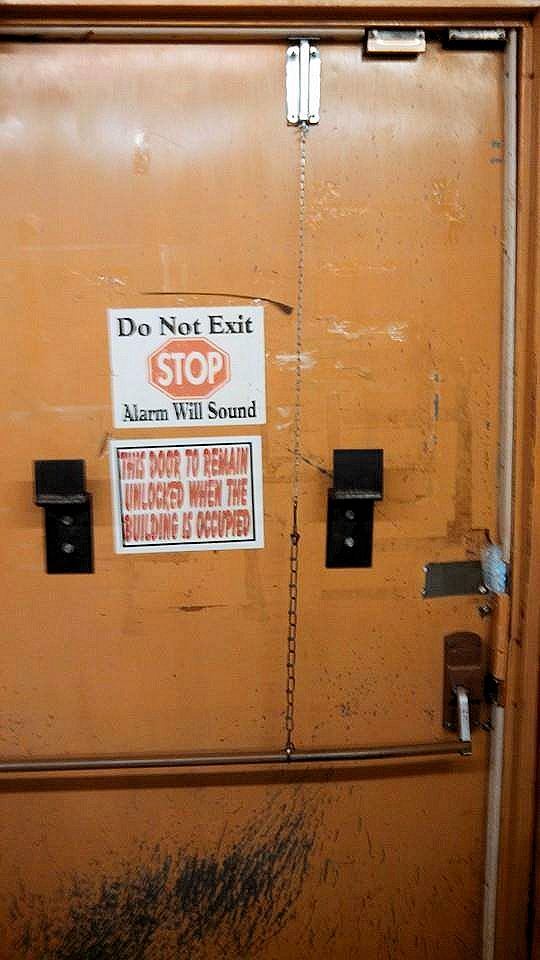Bill Lawliss of Allegion is my boss. Laurie Lawliss is Bill’s wife. Gil Emery Jr. is Laurie’s friend, who saw this door in an antique store in Vermont and posted a photo on Facebook, where it was seen by Laurie and sent to me. My plan for harnessing the power of the Earth’s population to identify and respond to code problems is working!
This antique store must have some REALLY valuable antiques in it, but it’s ok because someone has Fixed-It.
Did you know that the part of the code that includes the signage above (“This door to remain unlocked when building is occupied.”) only applies to:
a) the following occupancy types:
- Assembly occupancies with an occupant load of 300 or less
- Business, Factory, Mercantile, and Storage occupancies
- Places of religious worship
b) the following doors:
- the main exterior door or doors
c) and the following lock types:
- key-operated locks
- readily distinguishable as locked
The signage must be present (1 inch high letters on a contrasting background), and the use of this type of lock can be revoked by the building official for due cause – ie. if the door is locked while the building is occupied. If you see the sign on a door that is not the main entrance, or in an occupancy that is not one of those listed above, or with a lock that is not key-operated or readily distinguishable as locked, this should raise a red flag (get out your camera!).
You need to login or register to bookmark/favorite this content.






I am sure the chain is UL listed!
What is the plastic or thing directly above and to right of the panic hardware latch?
I’m not sure – I’ll ask.
It appears to be a very old door position switch.
Looks like makeshift weatherstripping. Maybe where an old nightlatch sat?
We must give them credit for ingenuity. The chain is very clever attached to the head bolt.
The chain is attached to the cross bar, correct? If nothing else, it’s a clever way of creating a two-point latching system. Is this the first run at Von Duprin’s cable system?
You can tell it is in an antique store by the antique 44 series exit device.
Trying to meet one operation criteria
The main door exception causes a lot of confusion for restaurants with indoor and outdoor seating areas separated by doors. When the weather is nice, doors to the outdoor seating area are open. In the winter they like to keep ‘em closed and locked. Often one of these doors is in the means of egress, and since it’s not the main door it doesn’t qualify for the “This door shall remain unlocked, really we promise” exception. It qualifies for an exit device, in spite of the code acceptance for the double cylinder deadbolt on the front door. It’s not exactly the easiest thing to explain.
Exactly! They could use an “emergency exit only” sign on that door, or add an alarm if they need to, but that’s the most restrictive approach that is code-compliant if the door is part of a required means of egress.
Problem is main entrance is not defined.
Can you have more than one??
How about McDonalds, where you can park on either side and there is an entry door on each side? Which is the main entrance?
That’s a good question. What is your answer?
I think that a business can have more than one main entrance and the allowance for main entrances should extend to them
These are great photo moments. I run across these all the time and will be sending more photos to Lori in the future. I really like the chain attached to the bar on the exit device. Makes for a one action departure. 🙂 Ted